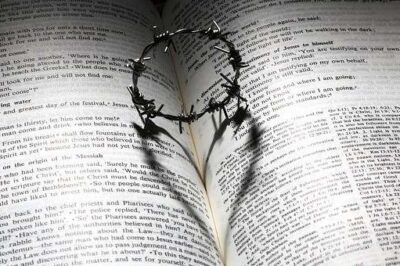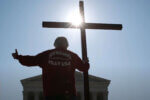AUTHOR’S NOTE: This article is also available in video format on Timothy Alberino’s YouTube channel, and in audio format on his podcast (The Alberino Analysis).
In the previous installment of this series, we discussed what it means to be made in the image of God and determined that all the sons in the divine family, be they men or angels, were fashioned in the same likeness, bearing together the image of their Father. But the image of God is more than a symbol of paternity; it is also a seal of authority.
The recognition of authority is essential to the effective rule of any governing body, be it terrestrial or extraterrestrial. When a person is appointed, or elected, to a position of great authority, the office he holds is represented by a token of authentication, such as a badge, a certificate or a seal. For instance, the seal of the President of the United States is a symbol of the office and authority of the presidency. Official documents published under the president’s name, such as presidential orders and commissions, are always authenticated with his seal and the president is always accompanied by his seal when in public — it is emblazoned on the vehicles that transport him and on the lecterns from which he speaks.
The presidential seal imbues its bearer with the honor and authority befitting the office, regardless of whether he merits them personally. It is also a reminder that the president commands the armed forces of the nation and is protected by the same. Everyone knows what would happen if they attempted to storm the podium while the president is speaking; they would be quickly neutralized by the agents of the Secret Service, the guardians of those who bear the presidential seal. Without the threat of force, and the power to enact it, governmental authority is entirely ineffectual.
Since the beginning of recorded history, seals have been utilized to endorse and authenticate the authority of the documents and persons that bore them. The ancient Mesopotamians made wide use of the cylinder seal — a small, cylindrical object typically made of stone (though also of copper, bronze and gold) that was engraved with the insignia of its owner. When rolled into moist clay, the cylinder would imprint a three-dimensional impression of its engravement like a stamp. The cylinder seal was employed by every strata of Mesopotamian society as an instrument of personal identification to endorse transactions and agreements or to mark property. But the most significant application of the seal was in governmental affairs, where it was used to authenticate and exercise the king’s authority.
When a king dispatched a regent to govern a province in his kingdom, the regent would necessarily bear the king’s seal as authentication of his appointment. The seal signified that the regent was authorized to act on behalf of the king and that his policies would be enforced, and offenders punished, by the soldiery of the kingdom. To disobey the king’s regent was to disobey the king himself. To attack the king’s regent was to declare war on the kingdom and provoke the swift retribution of its armies.
Throughout the ages, kings, oligarchs, emperors and monarchs wore signet rings engraved with the regalia of their royal house, which frequently included a facsimile of their own likeness. When written endorsement of their authority was required (e.g., a papal bull), they would imprint their seal onto the document by pressing the face of the signet ring into a softened solution of resin and wax. If the contents of the document were confidential, the seal would be used to glue it shut. It was unlawful for anyone but the intended recipient to break the royal seal and open the document.
The practice of the seal in earthly affairs is the temporal iteration of a transcendent principle at work in the design of living creatures. The seal of authentication in the kingdom of heaven is bound within the biology of the beings that are created to exercise authority. The hierarchy is preordained. Beings are not created and then provided with a purpose; they are explicitly created for a purpose. If a being is preordained to govern, he is created in the likeness of the sons of God, the ruling class.
When the King of heaven determined to bestow the deed of earth’s dominion to mankind, he authenticated the appointment with the seal of his royal house, bearing the facsimile of his own likeness. As with the cylinder seal and the signet ring, the image of the King was imprinted into earthen clay. Adam’s very anatomy is the authorization of His authority. He bears the likeness of a son, signaling to all would-be contenders that he is a sibling in the royal house and a member of the ruling class. Mankind was not merely granted dominion of planet earth; he was explicitly created for it.
Dominion is the right to rule within the boundaries of an established domain. The principle presumes a multiplicity of factions and a plurality of realms. If a man is shipwrecked alone on a solitary, uninhabited island in the middle of the Pacific Ocean, it would be unnecessary for him to plant his flag in the sand and lay claim, as there would be no one else around to challenge his dominion. If, however, his island were surrounded by other inhabited islands whose populations were intent on expansion, he would be forced to either assert his dominion and defend his domain or abdicate to the first assailant.
Let’s modify the scenario. Rather than being shipwrecked on the island, the man is sent there by a monarch in order to conquer and rule it. When he arrives, he plants the flag of his nation in the sand, claiming it for king and country. The factions inhabiting the surrounding islands regard him with disdain but they dare not dispute his dominion. To do so would be to challenge the nation he represents and provoke the fury of its armies.
Because man’s authority on earth is authorized by the King of heaven, his dominion is enforced by the armies of the kingdom. If it were not so, the alien enemies of mankind, numerous and powerful as they are, would have seized control of his domain long ago. (Indeed, the Scriptures record an antediluvian incident in which the dominion of earth was usurped by extraterrestrial agencies under specific circumstances. But this is the subject of a forthcoming article.)
As we observed in the Parable of the Prodigal Son, not all those who are in the Father’s house are sons. We should not presume that men and angels are the only inhabitants of the universe. There are likely other sentient beings populating the various realms of the kingdom. Among this constellation of characters, only the sons bear the image of the Father and have the authority to rule as His regents.
A final word on the image of God: It is essential to recognize that Jesus is the preeminent Son in the Father’s house and the expressed image of His person, as the writer of Hebrews elucidates:
“God, who at various times and in various ways spoke in time past to the fathers by the prophets, has in these last days spoken to us by His Son, whom he has appointed heir of all things, through whom also He made the worlds; [who is] the brightness of His glory and the express image of His person” (Heb. 1:1-3, NKJV).
As previously discussed, Jesus is the singularity — the fount of creation through whom and for whom all things were made, as Paul explains to the brethren in Colossae:
“He is the image of the invisible God, the firstborn over all creation. For by Him all things were created that are in heaven and that are on earth, visible and invisible, whether thrones or dominions or principalities or powers. All things were created through Him and for Him. And He is before all things, and in Him all things consist” (Col. 1:15-17, NKJV).
Notice the plurality of realms implicit in these verses. The writer of Hebrews cites the “worlds” that were made through Christ and Paul speaks of unseen “thrones, dominions, and principalities.” Contrary to popular belief, principalities are not demonic beings but realms governed by princes. These worlds and realms are the extraterrestrial domains of the other sons of God who were appointed to their respective regencies by the King of heaven, just as Adam was appointed to govern the earth.
In the Gospel of John, Jesus informs us that God is Spirit and that no one has seen the Father at any time, except for the Son who was with Him from the beginning. This is why no one can come to the Father, or even know Him, save through His only begotten Son who is the expressed image of His person. As the firstborn over all creation, Jesus is the original image-bearer in whose likeness all the other sons are made. He is the preeminent Son in the family of God and the supreme authority in the kingdom of heaven who the Father has appointed heir of all things. In the book of Daniel, he is called the Prince of princes and in John’s Revelation, the King of kings and Lord of lords. These epithets leave no room for doubt — Jesus reigns over all the sons of God and over every realm relegated to them in heaven or on earth.
If you would like to further explore the topics featured in this article, I commend you to my book, Birthright: The Coming Posthuman Apocalypse and The Usurpation of Adam’s Dominion on Planet Earth. {eoa}
Known as a modern-day Indiana Jones, Timothy Alberino is a writer, explorer and filmmaker whose inquisitive mind and intrepid spirit have led him all over the earth in search of lost cities, lost civilizations, hidden treasures and legendary creatures. His appetite for adventure was manifest at the age of 18 when he dropped out of high school in Cleveland, Ohio and moved to the Amazon jungle in Peru. Alberino is an accomplished autodidact and scholarly researcher. After years of rigorous study, he has garnered an expansive knowledge base that allows him to dissertate with authority on a wide variety of topics.
Read articles like this one and other Spirit-led content in our new platform, CHARISMA PLUS.







Leave a Comment
You must be logged in to post a comment.